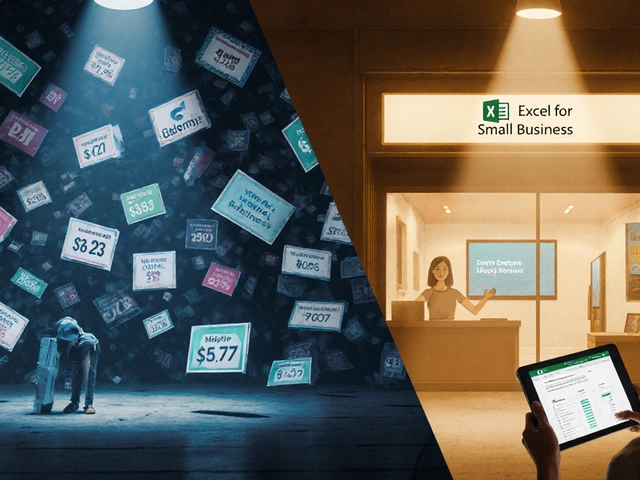Want to know which learning platform pays the most? It’s not about which one has the most students. It’s about which one puts the most money in your pocket when you teach or create content. If you’re thinking of turning your knowledge into income, you need to know where your skills will actually earn you the most - not just the most attention.
Top Platforms for Earning as an Instructor
In 2025, the top three platforms for earning money as a course creator are Udemy, Teachable, and Skillshare - but they work in completely different ways. You can’t compare them like phone plans. Each has its own payout structure, audience, and rules.
Udemy is the biggest. Over 200 million students have taken courses there. But here’s the catch: instructors earn between 2% and 97% of the sale price, depending on how the student found your course. If someone clicks your link directly, you get 97%. If Udemy promotes it in a sale - which happens 90% of the time - you get 3%. Most instructors make under $10 per sale on Udemy after discounts.
Teachable is the opposite. You own your course, your brand, and your pricing. You pay a monthly fee - $39 for the basic plan - and keep 95% of every sale. No discounts. No hidden cuts. If you drive your own traffic - through social media, email lists, or YouTube - you can make $50 to $300 per student. One instructor in New Zealand built a $12,000/month business teaching Excel for small business owners using Teachable, with zero ads.
Skillshare operates on a subscription model. You earn based on how many minutes students watch your content. In 2025, the average payout was $0.08 per minute watched. So if your 60-minute course gets watched fully by 1,000 students, you make $4,800. But here’s the reality: most courses get watched for only 10 to 20 minutes. The median payout per instructor per month is $127. That’s not enough to live on unless you have 20+ courses.
What Really Drives Earnings?
It’s not the platform. It’s your audience.
A course on Python for finance professionals made $21,000 in three months on Teachable because the creator had a LinkedIn following of 15,000. The same course on Udemy earned $870 in the same period - because it got buried under 50,000 other Python courses.
Platforms like Udemy and Skillshare are marketplaces. You’re competing with thousands of others. Teachable, Thinkific, and Kajabi are storefronts. You’re building your own shop. If you already have an email list, a YouTube channel, or a blog, Teachable gives you the highest return. If you’re starting from zero, Udemy gives you exposure - but you’ll need to sell thousands of courses just to break even.
Here’s a real example: A certified yoga teacher in Wellington created a 90-minute course on “Yoga for Desk Workers” and posted it on Udemy. It got 1,200 views in six months. She made $189. She then posted the same course on Teachable, promoted it through Instagram Reels, and emailed her 800-subscriber list. In 30 days, she sold 117 copies at $49 each. Net profit: $5,277.
Hidden Costs and Time Investments
Teachable sounds perfect - until you realize you have to do everything yourself. Marketing. Customer service. Updates. Payment processing. You need to know how to build a landing page, write an email sequence, and run Facebook ads. If you’re not comfortable with that, you’ll burn out.
Udemy handles all the tech and traffic. But you lose control. They can change your course’s price. They can remove it. They can push someone else’s course ahead of yours. And if you want to move your content elsewhere? You can’t. Your course is locked in.
Skillshare is the easiest to join. No upfront cost. No tech skills needed. But your earnings are unpredictable. You’re paid based on watch time, not sales. And if your course doesn’t get watched in the first 30 days, it disappears from recommendations.

Who Should Use Which Platform?
Here’s a simple guide:
- Use Udemy if you’re new, have no audience, and want to test your idea. Don’t expect to make a living - expect to learn what works.
- Use Skillshare if you’re a visual creator - illustrator, photographer, designer - and you want passive exposure. Your content should be short, engaging, and easy to consume.
- Use Teachable if you have an email list, a social following, or a niche expertise (like accounting for freelancers, or coding for nurses). You’re ready to build a business, not just a course.
The Real Winner: Your Own Brand
The highest-paying learning platform in 2025 isn’t any of the above. It’s your own website - with your name on it.
Think about it: If you’re known as “the go-to person for Excel in healthcare,” you can charge $200 for a live workshop. You can sell a $997 bundle of templates, courses, and coaching. You can offer monthly subscriptions. You’re not limited by platform fees or algorithms.
One instructor in Auckland built a personal brand around teaching small business owners how to use Google Sheets. He didn’t use Udemy or Teachable. He used a simple WordPress site, a Mailchimp list, and YouTube. He now earns $18,000 a month - from course sales, consulting, and affiliate partnerships. He didn’t need a platform. He needed consistency.
Platforms are tools. They’re not the destination. The real money comes from owning your audience, not renting space on someone else’s digital mall.

How to Start Today
If you want to start earning from teaching online, here’s what to do right now:
- Identify one specific problem you solve. Not “I teach Python.” But “I help nurses automate their shift schedules with Python scripts.”
- Record a 15-minute free video solving that problem. Upload it to YouTube or LinkedIn.
- Include a link in your bio to a simple landing page (use Carrd or Gumroad - they cost less than $10/month).
- Ask your first 10 friends to watch and give feedback.
- After you have 50 views, offer the full course for $29. No platform needed.
You don’t need to be an expert. You just need to be one step ahead of the person you’re helping. That’s all it takes to start making money.
What’s Next?
If you’re serious about earning from teaching, stop comparing platforms. Start building your audience. Your next student isn’t on Udemy. They’re on LinkedIn. On Reddit. On your neighbor’s WhatsApp group. Find them. Help them. Then ask them to pay you.
The platform doesn’t pay you. You pay yourself - by showing up, being clear, and delivering real value.
Can you make a full-time income teaching on Udemy?
Yes, but it’s rare. Only about 1% of instructors earn over $50,000 a year on Udemy. Most make under $500. To hit that top 1%, you need 50+ high-quality courses, strong SEO, and years of consistent updates. It’s possible, but not reliable. Most people who quit their jobs to teach on Udemy end up going back to their old jobs.
Is Teachable worth the monthly fee?
If you sell at least 80 courses a year at $50 each, you’ve already covered the $39/month fee and made $3,600 in profit. Most serious creators sell hundreds. The fee is a small cost for full control over pricing, branding, and customer data. It’s a business investment, not an expense.
Do I need to be a professional teacher to create a course?
No. You just need to have solved a problem better than someone else. You don’t need a degree. You don’t need a studio. You need to explain something clearly. One of the top-selling courses on Teachable was made by a stay-at-home mom who taught other parents how to organize kids’ homework using Notion.
Can I use multiple platforms at once?
Absolutely. Many instructors use Udemy to get exposure and Teachable to convert buyers into loyal customers. You can offer a free mini-course on Skillshare to grow your email list, then sell the full version on your own site. Cross-promotion works - as long as you’re not giving away your best content for free.
What’s the fastest way to make $1,000 teaching online?
Sell a $100 course to 10 people. Find your niche - something specific like “TikTok ads for local plumbers” or “Notion for single parents.” Create a 30-minute video course. Post it on Gumroad or Carrd. Share it in 3 Facebook groups where your ideal students hang out. You’ll get sales within 72 hours if your topic is clear and your title is direct.
If you’re ready to start, don’t wait for the perfect platform. Start with what you have. Your knowledge is worth more than you think. The only thing standing between you and your first sale is the decision to hit publish.





